I had been chatting with Nick from Nicks Adventures Bolivia for a few weeks by the time we arrived in Santa Cruz, where his office is based. Nick offers lots of different tours in Bolivia, including a number of different wildlife tours. Although originally from Australia, Nick has been living in Bolivia for 4 years and is incredibly knowledgeable about what Bolivia offers, which is a lot more than you think, and more than most people see.
When I saw he offered a Jaguar Tour in the depths of the Chaco, a dry, thorny, arid and very dense forest, I immediately wanted to do it.
A little bit about Jaguars
Jaguars have a ‘Near Threatened’ status and, due to deforestation and hunting, are slowly disappearing from various countries. Once upon a time they were found throughout south and central America but they are now found mainly in the Amazon and the Pantanal – a huge wetland area in Brazil, Bolivia and Paraguay. Due to their elusive nature, it is not known exactly how many remain but it is thought their numbers are declining.
Jaguars are the third largest cat on the planet and they have the most powerful bite, often killing their prey by crushing its skull. They are known to eat over 85 species of animals but in the Chaco we witnessed first hand how much they love to snack on the 3 banded armarillo!
Jaguars are primarily solitary animals but during mating season, they can be seen walking with their partner.

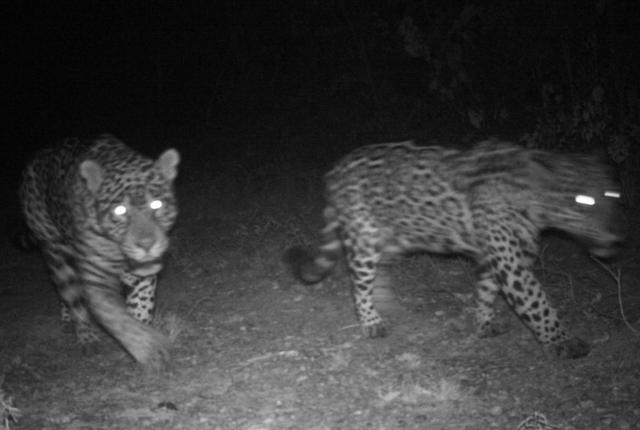
The jaguar gestation period is between 90-110 days and they have up to 4 cubs although normally only 1 / 2 survive due to the harsh conditions of their habitat.


Jaguars are often slated for being cattle killers and this causes lots of cattle ranchers to go out with dogs and guns, hunting these beautiful animals. However, it is often (although not always) the cattle that wander into the jaguars range due to lack of fencing.
I spoke to a guy from San Miguelito Jaguar Conservation Ranch about these killing. He explained that he looses 3/4% of his cattle each year to jaguar killings and has turned to tourism to compensate for this lose. Although he has chosen this route, he explained that he is ‘pilot testing’ it and others who own neighbouring land still kill the jaguars, the total for the year so far is 4.
Many organisations and individuals are now trying to educate farmers to prevent these retaliatory killing. Poaching is actually, unbelievably, still legal in Bolivia but happens a lot less than it used it.
The Tour
As I was saying, I desperately wanted to do this Jaguar Tour but it is expensive; although no where near as expensive as tours in the Brazilian Pantanal which range from $3,000 – $10,000 dollars. Having explained to Nick that we are travelling ‘long term’ and don’t have a ‘holiday’ type budget he was very accommodating and explained that there were a number of ways to get the cost down.
Even then, we debated. What if we don’t see a jaguar? Is this something we should do when we are older and have money? What or how many things will we have to sacrifice doing to do this?
So, I decided to put a call into Mum. Mothers normally have the answers. Upon chatting to her and really feeling like we were 70% not going to do it, she said, ‘JUST DO IT, when are you going to be in Bolivia again and what if Jaguars are instinct or even harder to see in 5 years time?’. She also offered to give us a little helping hand financially which I could credit against a birthday / Christmas present or pay back.
I was sold. Max was sold. We went to see Nick to finalise the details. The Jaguar bubble commenced.
We left Santa Cruz early and started the 5 -6 hour drive to Kaa Lya National Park, stopping at an all you can eat Brazilian place on the way in San José de Chiquitos where we could take some quick snaps of more jesuit ruins. We also collected Hanna and Sandy, two of Nicks friends who are travelling through South America in a combi (very cool!).
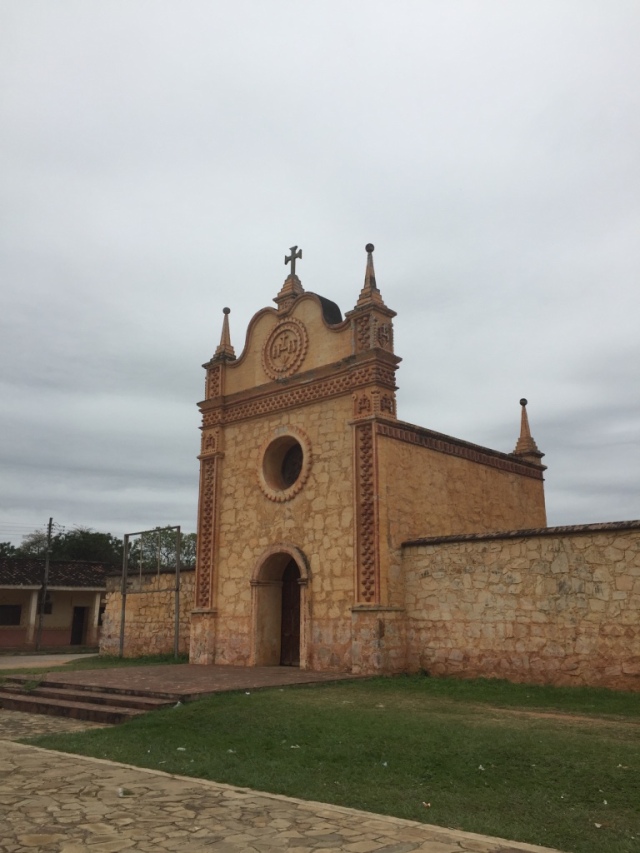
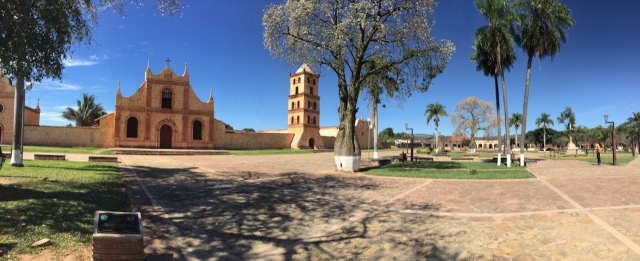
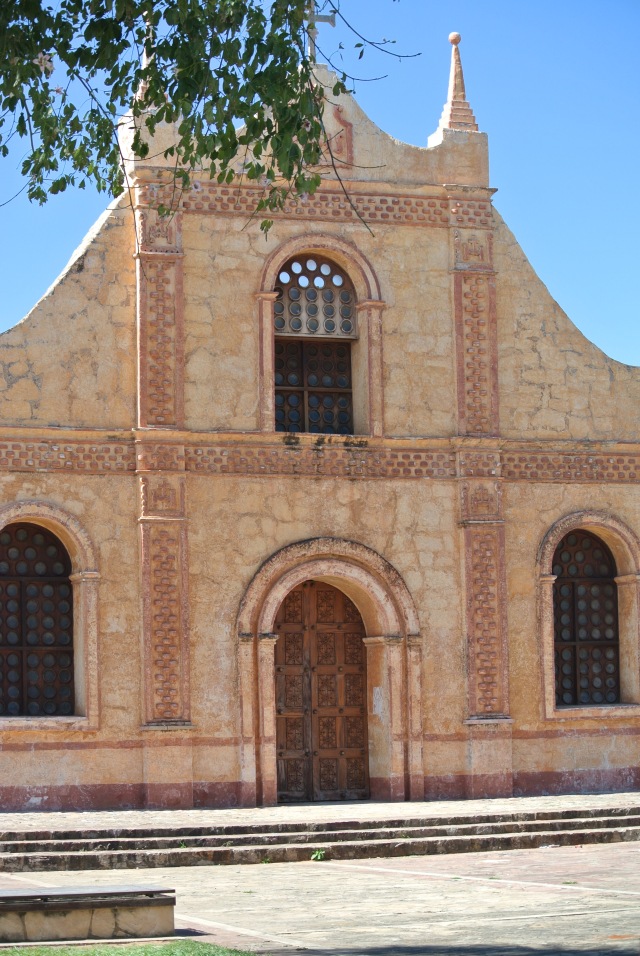
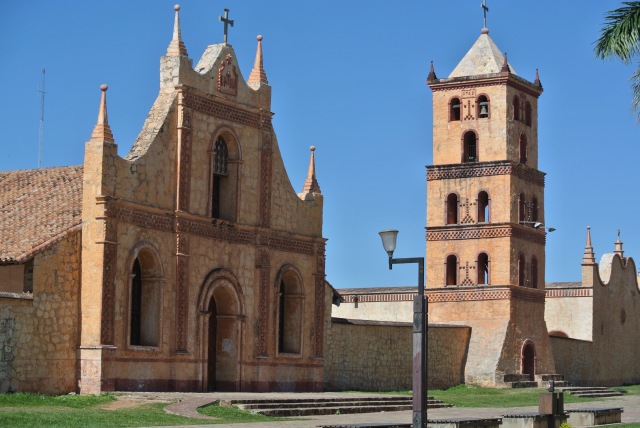
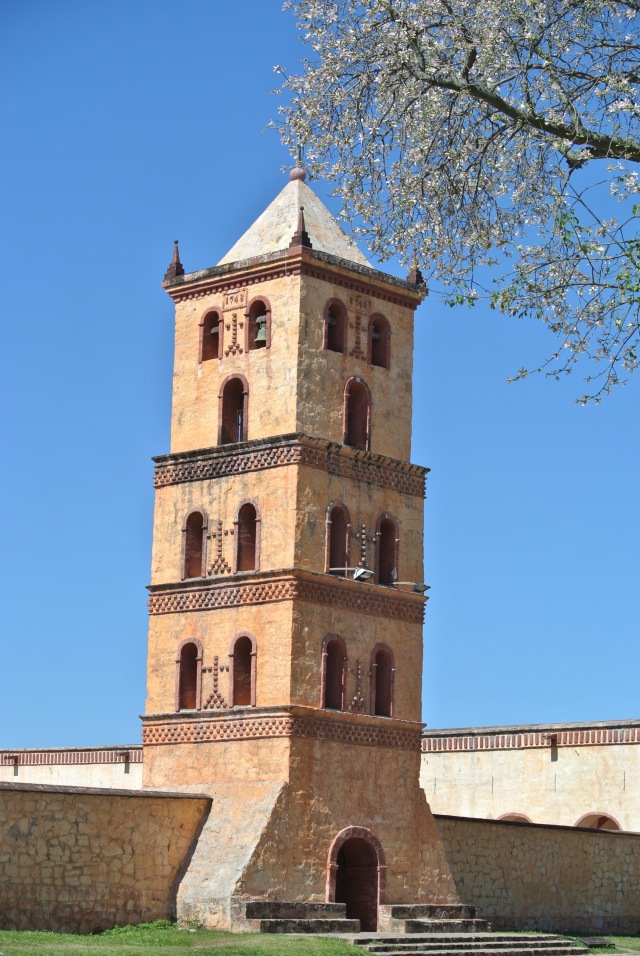
We arrived in the park by mid afternoon having already seen monkeys, a Jeffery’s cat, which crossed the main road in front of us, and a fox. Although the target animal is a Jaguar, the Chaco is home to many animals.


To enter the park, you need various permissions and licenses, hence it is incredibly rarely visited.
We unpacked our stuff, grabbed a snack and started out on our journey in search of the elusive jaguar.

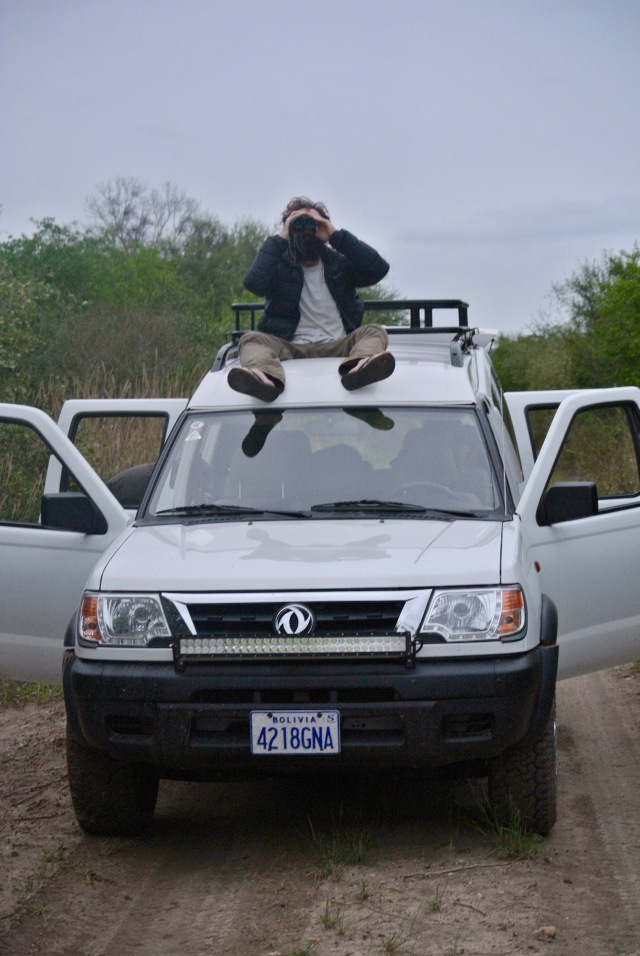

The whole time we were driving this track, we were looking for signs of animals such a poo, patches of grass that were flattened, animal tracks and carcasses.
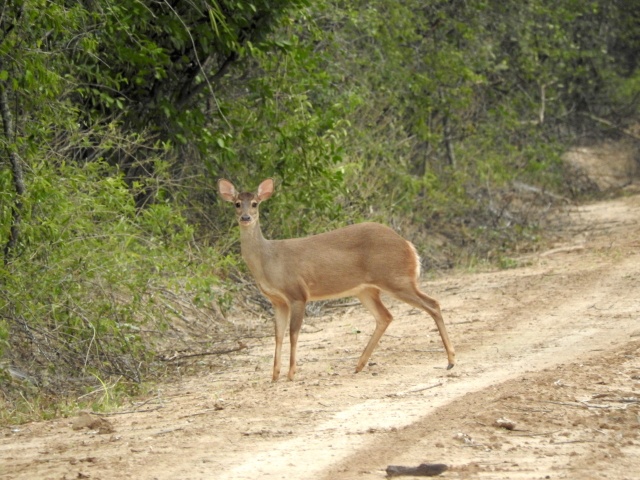
We tracked until after dark using the spot lights and caught a very quick sighting of what was probably a puma, but within a second or two it had jumped off the road and into the bushes.

We went back to the lodge, cooked some dinner and got an early night. Nick had warned us we wouldn’t be getting that much sleep so I wasn’t surprised when he said we needed to set our alarms for 4am.
Day 2
After a sleepy breakfast at ridiculous o’clock we jumped in the car before light in search of those green jewel-like eyes of the jaguar.
As it got lighter, Max spotted a patch of grass that was folded over. Nico, a park ranger in this area for over 20 years, who joined us in the car, knelt over the patch and smelt the grass, ‘El Tigre!’, he exclaimed. That’s what they call the jaguar over here, not to be confused with a tiger! We had missed a jaguar by a matter of minutes.
We continued with the windows down listening for crunching in the bushes; we got lucky within an hour. However, it wasn’t a jaguar, it was a tapir. Tapirs are amazing creatures, they seem so peaceful and humble. On this occasion we only heard it, we didn’t see it but later that morning we were graced with the presence of this one who walked towards us for quite some time. They have very poor eyesight but an amazing sense of smell so we ran in single file on the other side of the road to the tapir using hand movements to communicate. It fel
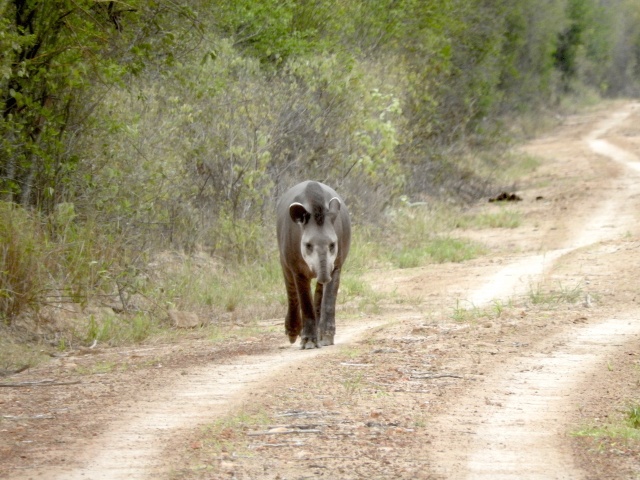

Quick Facts about the Tapir
- Tapirs are excellent swimmers
- They can live for 25-30 years
- Jaguars love to eat the tapir
- They are not sexually mature until the age of 3 and have a 13 month gestation period producing only one calf.
- They are considered endangered
- There babies have white strips and spots.
We continued the journey down the dirt track for what seemed like hours, poised for that moment when we would surely stumble upon a jaguar. The track has KM markers the whole way down so whenever Nick sees a jaguar he records the KM and the time. He therefore knows where the hot spots are.
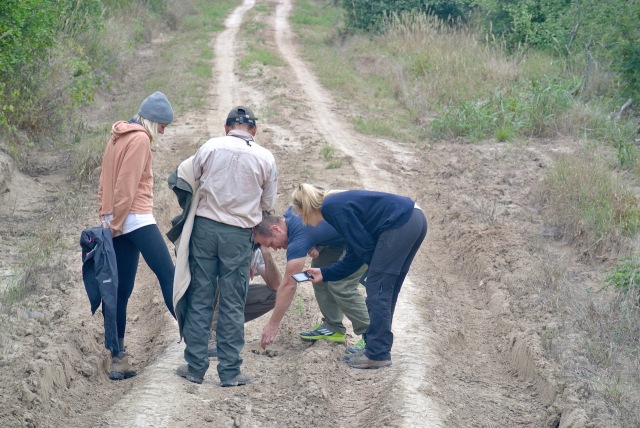
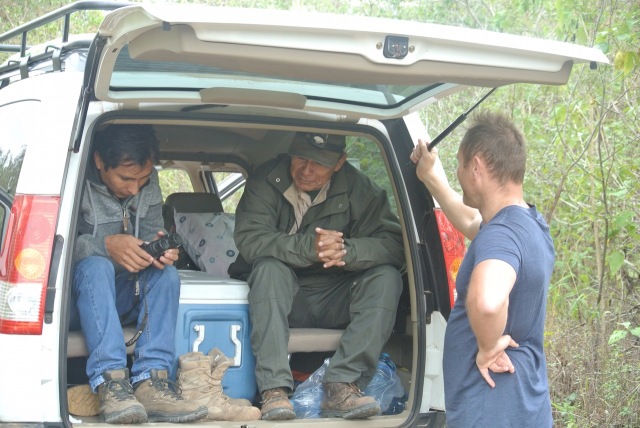
We went beyond the gas works and onto an air strip where there is a tunnel, sometimes home to a female jaguar and her cubs. Bravely Nico and Nick quietly approached the tunnel kneeling down, but nothing.


We left feeling a little disheartened and stopped for lunch. We discussed that perhaps this unusual cold weather was keeping the cats off the road.

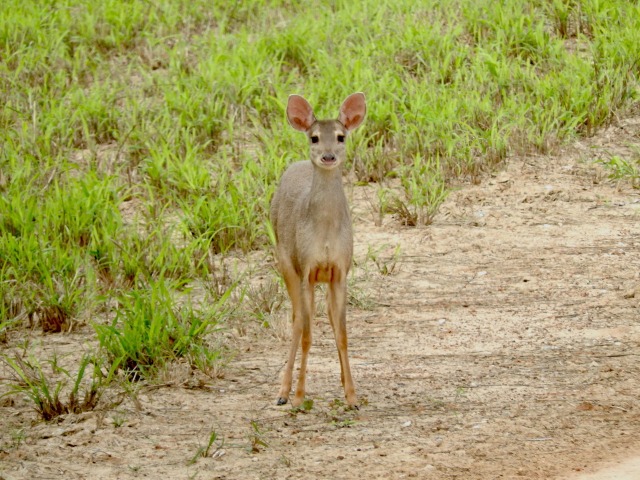
We had seen numerous 3 banded armadillo. Nick is very good at catching them so we had a chance to really study their bodies.
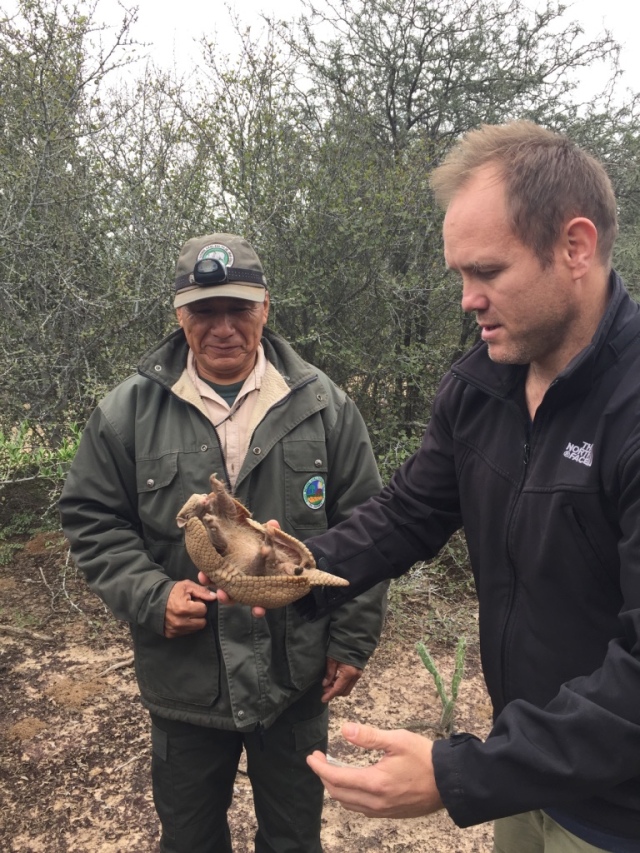

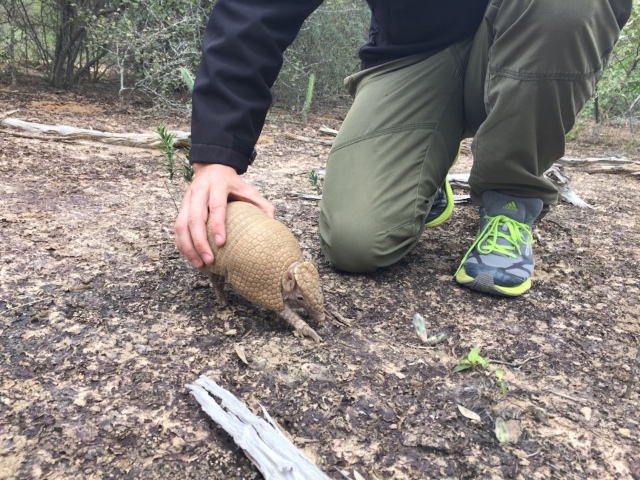
We drove back up the road seeing an ocelot and another tapir. This shouldn’t be taken for-granted, ocelots are incredibly pretty but they never stick around for long and seem more like domestic cats in their skittish manner.

We arrived back at the lodge way after dark. I could feel everyones anxiety hanging in the air.
Nick desperately wanted to find us a jaguar and all four of us had really splurged on this experience. Was seeing some tapir and some more common animals going to make it worth while? Thankfully we all got on really well and despite the fact we hadn’t seen a jaguar, the banter was good and Nick told us so many amazing and interesting stories. He is like an encyclopaedia for Bolivia and jaguars. I felt I was learning a lot. We discussed the issues with cattle farmers and the sad stories about jaguars who had been shot. One in particular stays in my mind, a mother with milk was shot so not only did she die, but all her cubs will also have perished.
We went to sleep and all chatted about the fact we only had one full day left and we feared that we were not going to see anything. On the last trip, Nick had seen 6 jaguars so we thought perhaps probability was against us.
I closed my eyes and all I could see was that darn straight dirt track through the Chaco.
Day 3
Another early start at 4:30am and we were back on the road. The skies looked a little clearer and we prayed for more sun hoping it would encourage the big cats out onto the road.
We made a big find mid-morning. A freshly eaten armadillo shell and a patch where the jaguar had obviously laid down to enjoy his/her meal.

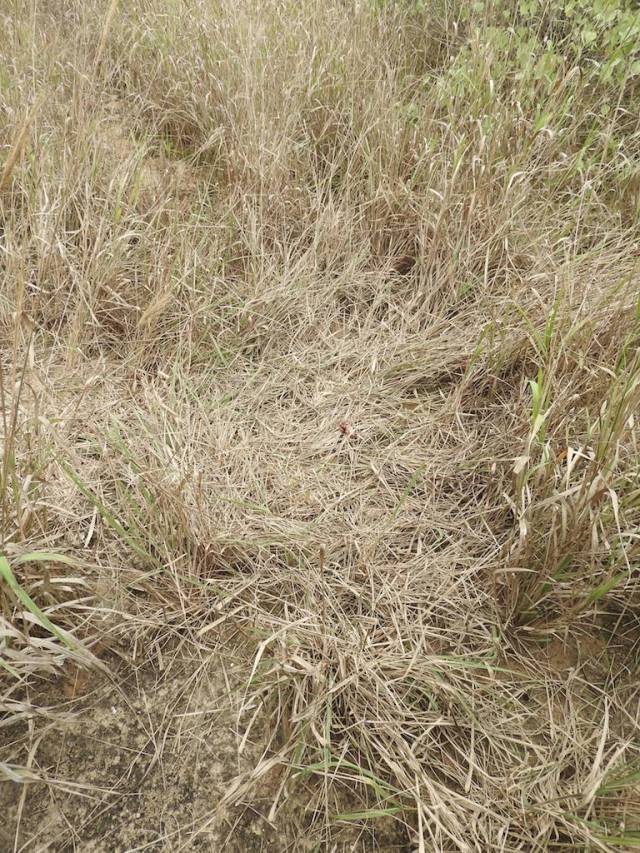



Having driven down really far, perhaps to KM 145 , we turned around and started to head back to the lodge for lunch. Nick has prepared us to be up all night. My heart sunk and I thought we were doomed. We had seen EVERYTHING; the poo, freshly eaten prey, tracks, the jaguars favourite food ready to be eaten but NO jaguar.
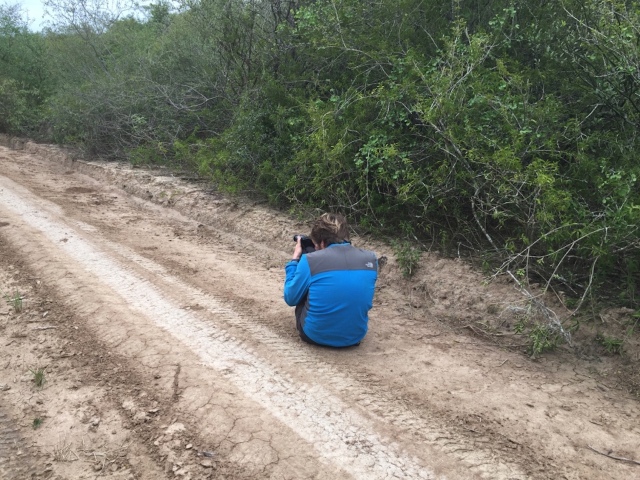
But, as we hit km 178, a hot spot for jaguars, Max saw something in the far distance.
“Houston we have a jaguar!” He actually said that!
We grabbed a peak through the binoculars but it was a long way off. I couldn’t get them into focus before the jaguar slowly skulked into the bushes. We drove up past where we thought he has gone in and got out the car quietly, hoping he may reappear. And he did. The most magnificent big, stocky male walked back out onto the road and just stared at us.
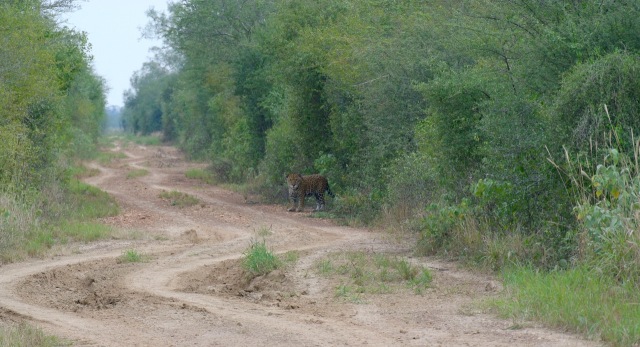
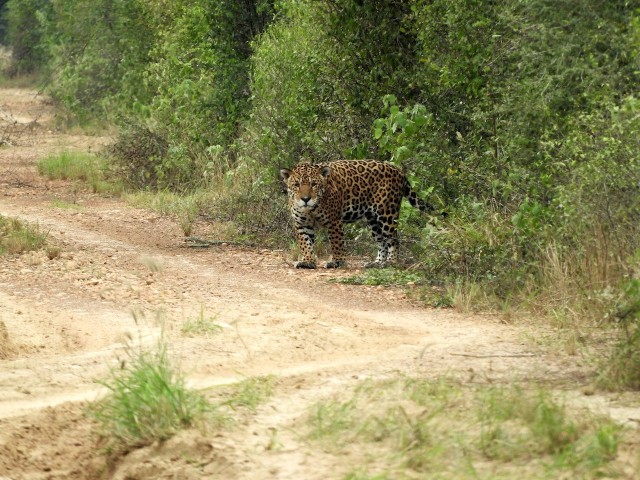
It’s hard to put into words how it felt. We were all really surprised by just how emotional we were. To see such a majestic animal that we had spent 3 days looking for, just standing and staring at us was truly surreal. He was so handsome, with such a distinctive look and shape that Nick was sure this was his first sighting of this particular cat. He hung around for a few minutes before slowly turning round and heading back into the bush. Unlike the ocelots and pumas, he wasn’t skittish, he was curious and it was almost like the cogs were turning in his head and he was trying to figure us out.
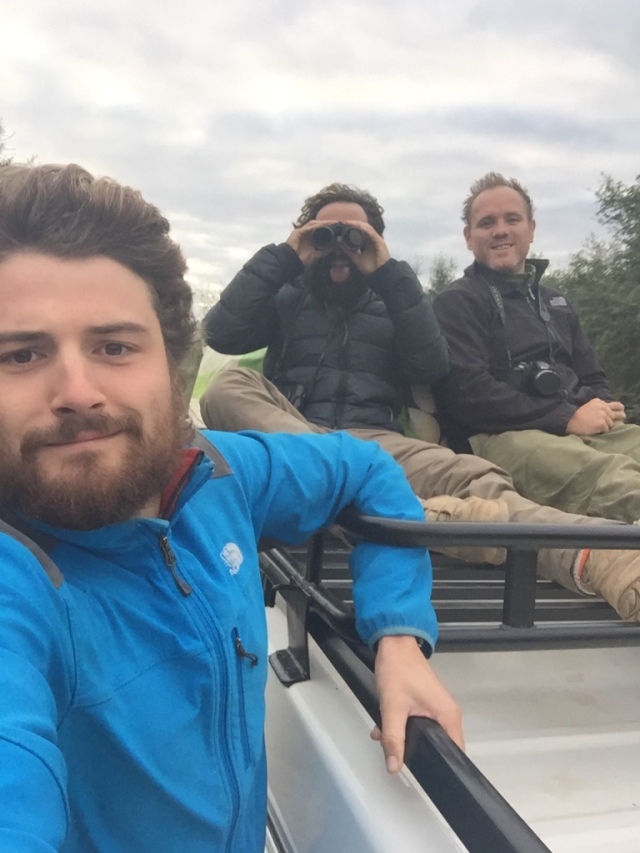
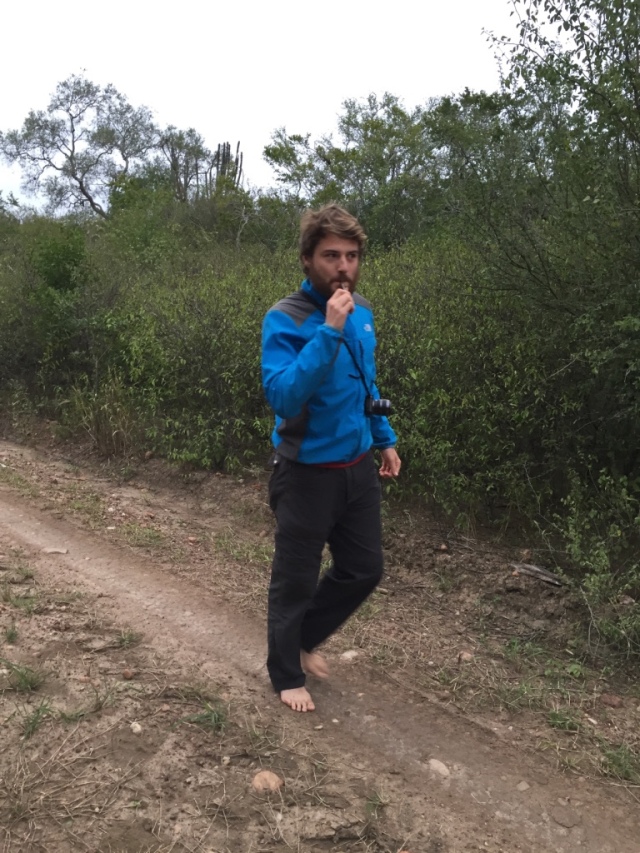
As we drove back, things got a bit crazy! We got a great sighting of an ocelot and a giant Anteater, something Nick had never seen before in his 37 trips to the Chaco. It was the most peculiar animal! We didn’t get time to get a picture but here is one from San Miguelito.

Buzzing and feeling as though a weight had been lifted off our shoulders we enjoyed a relaxed lunch. The sun had finally come out!
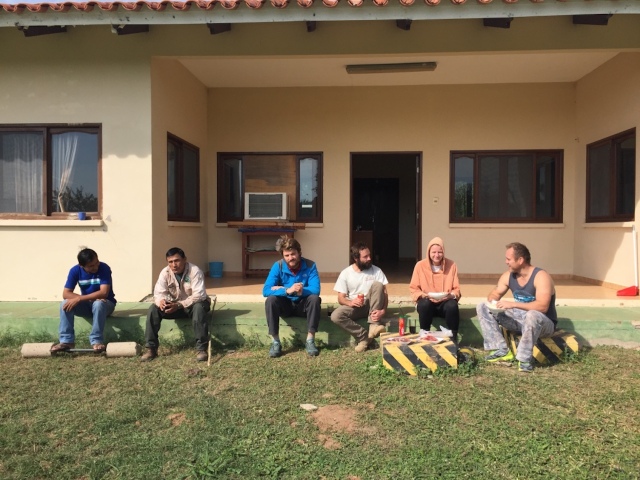
After lunch we headed back out along the road.

Although grateful to have seen one jaguar, we wanted more! It had given us such a buzz!
We stopped down at KM178 in a wide area and took a break to stretch our legs. Despite the sun being out, we hadn’t seen much. Max walked one way and I looked the other. I asked Nico, the park ranger to borrow the binoculars because I could vaguely see a large figure in the distance. But knowing my eyes, I thought I was probably wrong.
I wasn’t. A second jaguar was walking straight towards us. Perhaps we had woken him up by driving past? That rush of adrenalin surged again. We didn’t get back in the car but began to run in a straight line down towards the jaguar.

As he walked towards us, his attitude and body language was totally different to the other one. He was very bold, marking his territory multiple times and his tail was swinging from side to side. He stopped a few times and it was clear to see that he had noticed us but he didn’t care for our presence and kept moving towards us.

As we were around 70 metres from the car and this jaguar was still approaching us without hesitation Nick took the wise move and stood up, hoping it would deter him from coming any nearer. It did. But he didn’t go into the bushes.


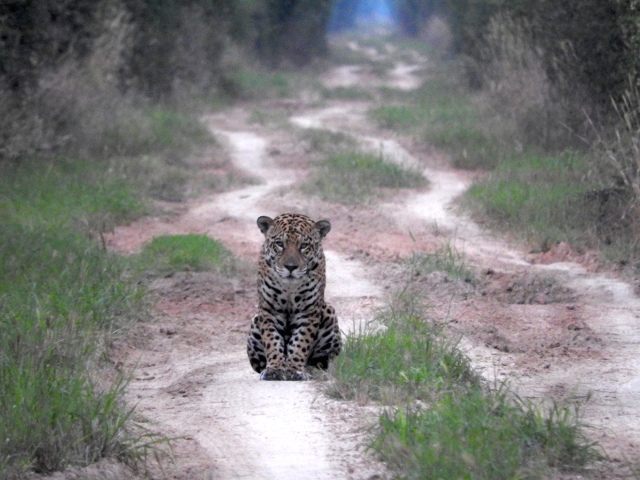

Sat down, at peace with us in his territory, we watched him for more than 20 minutes. He then slowly got up and walked back into the bush.
We walked back to the car, but realised he had come out again and was sniffing where we had been sitting. As the sun went down he kept reappearing. I think he may have walked right up to the car if we had been in it. He seemed so fascinated by us, not scared at all, much bolder than the male we had seen earlier in the day.
We drove back to the lodge more than satisfied but totally exhausted. This night I fell asleep with the first jaguars face in my mind, not just the dirt tracks through the Chaco.
Day 4

Having seen more than enough we didn’t drive back down the normal road but we took a short hike to a lagoon where tapirs are sometimes seen bathing.
There wasn’t any, but it was worth a try! Still too cold.

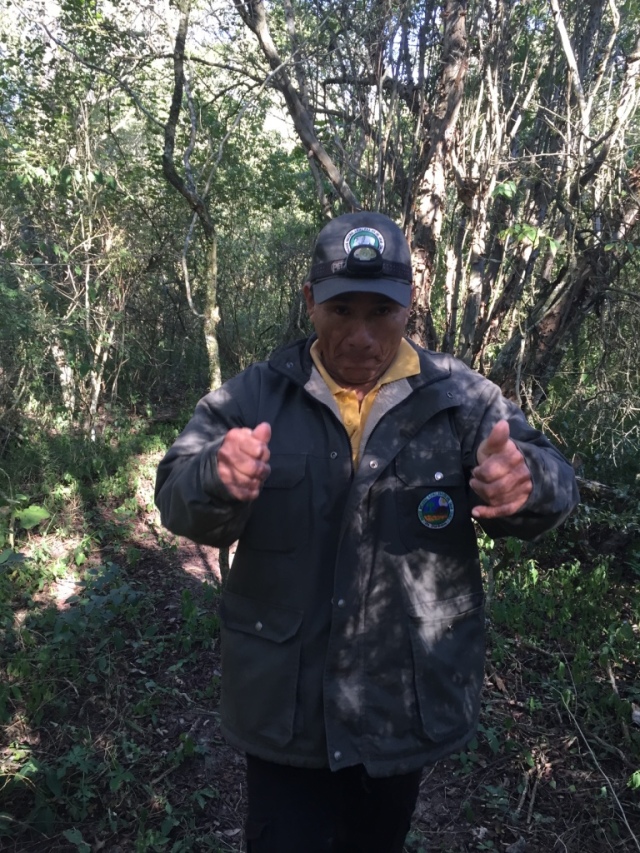

Our final animal count was as follows:
5 x Tapir, 2 x jaguar, 9 x deer, 7 foxes including one with cub, savannah Hawks, 4 x ocelots (1 quick sighting), 1 x puma (very quick sighting), 1 x giant anteater, 1 x Jeffrey’s cat, 1 x yacarondi, titi monkeys, capuchin monkeys, 2 x tortoise.
We have now seen 4 out of ‘BIG FIVE’ mammals to see in South America; the Jaguar, the Giant River Otter, the Tapir and the Giant Anteater. The only one that eludes us is the Maned Wolf, and some would put the anaconda in there somewhere!
We had an epic adventure with Nick. His grit, determination and passion for these animals was so evident and his want to share that with us was clear to see. He did everything he could to make this trip memorable and wow, it certainly was. You just can’t put a price on this kind of experience, we felt in a little jaguar bubble for days after, still reeling and constantly chatting about our time in the Chaco.
Nick lent me a book called Jaguar: One Man’s Struggle To Establish The World’s First Jaguar Preserve. It’s an emotional and inspiring read, so if you’ve enjoyed learning just a little bit about jaguars via this blog i’m sure you’ll enjoy the book.
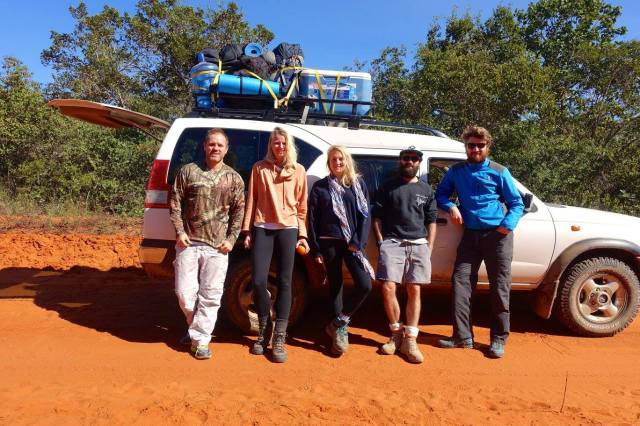
Thanks so much Nick for an amazing time, it really was one of the best experiences of our lives.
PS. I have lots of amazing videos, but not a strong enough connection to upload them. Keep an eye on the Facebook page, hopefully I will be able to complete the uploads soon.
*** WHILST I APPRECIATE YOU SHARING THIS ARTICLE, PLEASE DO NOT USE ANY OF MY IMAGES WITHOUT PERMISSION, THANKS***
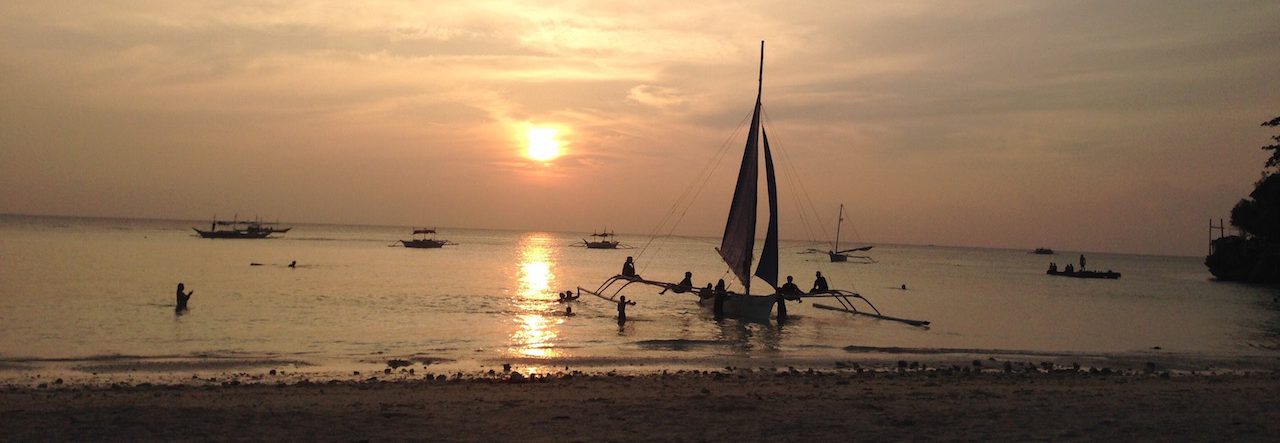
What a great blog entry! Fascinating, descriptive and with plenty of emotion. An experience that will stay with you both forever and may even encourage other people to find out more about this beautiful animal! So when you are next in Bolivia give http://www.nicksadventuresbolivia.com/
a call and tick this little beauty off of your bucket list! Thanks Lottie and Max for this little gem and for sharing your amazing photos! Now what’s next…?
LikeLike
Just reading your latest entry Lottie has got my adrenalin going – so exciting it is. Oh wow – real jaguars – in the flesh – I can imagine the good morale of the group on the way home that night …..! Just fabulous ….. And thank you to Mummy Wemyss for helping it to fiix it for you and Max.
LikeLike
So happy you had a great trip !! Was a pleasure meeting you all and especially to share the Jaguar and Tapir sightings with you all.
LikeLike
You were so lucky seeing so many animals in wild in such a short time…and the jaguar… ! I’ve lived in Bolivia for 3 years and have seen them only in the zoo, but then,,, I’ve never went on a trip with Nick’s Adventures:) P.S. One thing I need to correct – the Jesuit missions in Bolivia aren’t RUINS. They have all been restored to their past glory:) Good luck in your future travells!
LikeLike
Hi! Thanks for your comment. We feel incredibly lucky to have seen Jaguars in the wild. You really have to go to very remote places to see these majestic creatures and I can’t recommend the experience more. Yes, the ‘ruins’ look quite obviously restored, incredibly beautiful and pleasing on the eye!
LikeLiked by 1 person
I actualy read that there is jaguar living on the grounds of Viru Viru airport in Santa Cruz! Hahaha, everything is possible in Bolivia:) But you are right – one has to travel to remote places to see all the beauty. I was lucky to see spider monkeys in Chiquitania (or so I thought) and they scared me to death:)
LikeLike
Well that would be amazing if there is! It’s people like Nick and others who raise the profile of these creatures and their importance that will hopefully keep them from going extinct. We were lucky enough to see sloth’s , monkeys and armadillo in the ‘botanical gardens’ just outside Santa Cruz, but Jaguars and tapirs blow everything else out of the water!
LikeLike
Face. Yumgapampa
LikeLike
What a great story! And those photo’s… amazing! Hope we are also that lucky when we do this trip with Nick. 2 months to go 🙂
LikeLike
Awesome to hear you’re going!! Make sure you take a good camera lense! Nick has one but always useful to have your own. Same with binoculars. I think he has 2 pairs so depends how many in your group! Good luck!
LikeLike
Yeah, good tip with the binoculars! We are with 4 persons, two are photographing and 1 is filming. We have a 100-300mm and 100-400mm lens, must work with that. I’m so excited for this trip!!
LikeLike